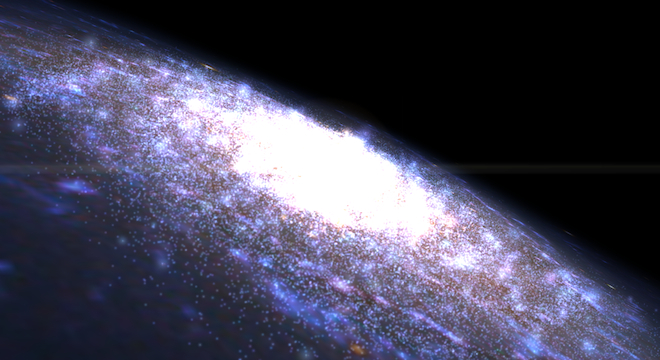The Milky Way contains at least 100 billion planets, or enough to have one for each of its stars, and many of them are likely to be capable of supporting conditions favorable to life, according to a new estimate from scientists at the California Institute of Technology in Pasadena, California (Caltech).
That specific figure of 100 billion planets has been suggested by earlier, separate studies, but the new analysis corroborates the earlier numbers and may even add to them, as it was conducted on a single star system — Kepler 32 — which contains five planets and is located some 1,000 light years away from Earth in between the patch of sky found between the constellations Cygnus and Lyra, where NASA’s planet-hunting Kepler Space Telescope is pointed.
In fact, the new star census estimate, which came after scientists verified three of the five planets around the star Kepler 32, is strictly conservative, according to the Caltech astronomers who developed it after studying the Kepler 32 system.
“There’s room for these numbers to really grow,” said Jonathan Swift, a Caltech astronomer who is the lead author on a paper on the new findings, in a phone interview with TPM. “They’re not going to shrink. Our calculation is new in the sense that we are making the calculation of planets in compact systems around the most populous type of stars in the galaxy.”
Swift and his colleagues used Kepler data collected outside of the space telescope’s main mission, which is to hunt for Earthlike planets around Sun-like stars. But the Kepler telescope, which can detect the relatively minute fluctuations in light from faraway stars when orbiting planets pass in front of them, also picks up a few of the brighter types of a smaller type of star known as a red dwarf. The Caltech astronomers and colleagues from the University of Notre Dame and University of Chicago were able to focus on one of these types of stars, Kepler 32, and study it in greater detail.
The paper outlining the find was published as a pre-release in late December online here and will appear in the the Astrophysical Journal in February.
Aside from providing a more accurate picture of the makeup of our galaxy, Swift and his colleagues’ findings indicate that most of the planets outside of our Solar System formed in star systems very different from our own, much closer to their parent stars, but with similar potentials for supporting life.
Red dwarfs like Kepler 32 are thought to make up about 75 percent of the total stars in the entire galaxy, but can’t be seen by the naked eye here on Earth or most telescopes because they are so faint.
“You can think of them as the ‘Silent Majority’ of the galaxy,” said John Johnson, an assistant professor of astronomy at Caltech who also participated in the study and was a co-author on the paper.
Red dwarfs are cooler, less massive, and less luminous stars than our own Sun. The specific star Swift looked at, Kepler 32, is about half the mass and half the radius of the Sun.
But that turns out to be a bonus when it comes to the capacity for Kepler 32 and other red dwarf systems to have conditions favorable to life. Because the stars are so much smaller and cooler than the Sun, the habitable zone — the area where any orbiting planets have surface temperatures amenable to liquid water — is much closer than in our own Solar System.
“The outermost planet in the Kepler 32 system is just a tenth distance Earth to our Sun,” noted Swift. “But it could still be amenable to liquid water because it is just inside edge of habitable zone.”
That said, in this particular case, the planet is likely to be similar to Neptune — comprised primarily of ice and gas with some rock mixed in.
“We think it lacks a solid surface,” said Johnson, “I probably wouldn’t recommend going there on vacation.”
But overall, the chances of life on such planets are good, because they and their parent stars are likely to be much older and longer-lasting than Earth’s Sun, between two and 10 billion years. That’s because they sip less fuel over time.
So in the future, when Earth’s Sun begins to run out of fuel after another 4 billion years, any intelligent life still on the planet would do well to migrate to a system like Kepler 32.
“This star will be there when the last Sun-like stars die,” Johnson concluded.
Correction: This article originally stated that red dwarf stars are “less dense” than Earth’s Sun, when this is not the case. Red dwarfs are denser, but less massive. This article also originally said that the paper outlining the find was published in the Astrophysical Journal on Wednesday, when in fact, it is not appearing there until February. The references have since been corrected in copy and we regret the errors.






